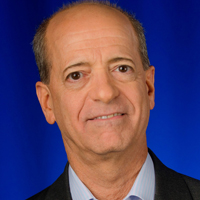Non-Real-Time Content Bolsters Broadcasters Against Streamers

In a recent column, Harry Jessell reacted to recent pronouncements of linear TV’s impending death by providing (cold?) comfort to broadcasters that their spectrum could always be used exclusively for datacasting, or simply auctioned off for other uses.
Harry’s equation of over-the-air (OTA) broadcasting’s television content as falling exclusively into the “linear TV” category, while a commonly held premise, may not tell the whole story, though. There are mechanisms by which OTA broadcasters can deliver non-linear television content, and thereby align their services more compatibly to emerging audience preferences.
The ATSC calls this form of delivery “non-real-time” (NRT) content, and although it was technically possible in ATSC 1.0, it is, like datacasting, another function that is greatly enhanced in the ATSC 3.0 standard. The proliferation of cheap digital storage (either locally or in the cloud) also makes this option more palatable now and in the future than it has been in the past.
The way this works is that the broadcast station dedicates a portion of its bandwidth to send NRT content (TV programs, movies etc.) to a receiver, which stores it somewhere and puts it on a menu that the viewer calls up and selects from as on-demand content. The content can be free with embedded (and even non-skippable) advertising included, or commercial-free/premium (paid) content to which the user subscribes or orders from the broadcaster.
In the past, this has been called “tricklecasting,” in that the content is broadcast via a slow, sidecar datastream alongside linear TV content, so that the NRT programming takes longer than its actual running time to deliver (e.g., it takes two or more hours to download a 30-minute program). But with ATSC 3.0, the trickle can become a torrent, and the content can actually be delivered faster than real time. This could be particularly true if/when linear TV content becomes a smaller part of the OTA TV business, as Disney’s Bob Iger and others predict, since more of the broadcaster’s channel could then be dedicated to NRT delivery.
In fact, the download may not even have to take place via the OTA channel. The broadcaster’s on-demand content could simply originate from a cloud service hosted by the station — although this puts broadcasters into the actual VOD business. A variant could allow broadcasters to use the NRT method for delivering only trailers and teasers or pilot episodes, with the full content/seasons being available via VOD/streaming. So, there are numerous shades of gray here — and in any case, actual viewership data can be measured, so ratings data or usage metrics are accurately collected.
Another variant that has already proven popular in Europe is so-called “catch-up TV,” where viewers of linear content on a real time broadcast can click on an on-screen option to watch content that aired before they tuned in (e.g., tuning in midway to a sporting event that they haven’t set to record on a DVR, but still being able to watch the game from the beginning), or to catch up on previous episodes of a series that they started watching mid-season.
Yes, one could argue that broadcasters have actually been offering non-linear content (whether they intended to or not) since the commercial availability of the DVR. But in that case, individual users’ caches of TV content are fed in real-time, and content is “ordered” by a user not from a page of thumbnails but from a program-guide grid, with users having to wait until the scheduled content they seek is initially aired before it is available for on-demand playback from their DVRs. Like podcasting, this ordering process also can be set to repeat for a series of programs at whatever frequency new content becomes available — in other words, a “subscription.”
NRT, or broadcaster VOD, builds on this popular DVR service model (and in this case, intentionally so), but importantly, without the waiting (except, of course, for live events like sports matches that haven’t happened yet), with the offered content being immediately available for on-demand viewing — and even binge-watching.
So, while you may not have heard much about it yet, ATSC 3.0 NRT opens up a hybrid business option that lets a broadcaster act like an OTA Netflix. It allows us to further challenge the syllogism that if linear TV is dying, and all OTA TV is linear, then OTA TV’s days are numbered. Perhaps not.
Skip Pizzi is owner and principal of Skip Pizzi Media Consultant LLC and senior adviser to the Public Media Venture Group, for which he is producing the pre-NAB Show conference, Public Media Technology Summit, at the Renaissance Hotel Las Vegas, April 13-14.


































Comments (0)